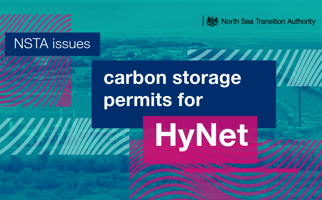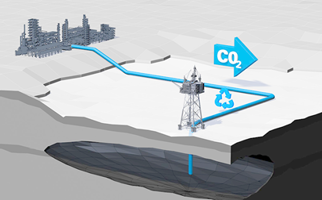
- Potential future carbon storage sites easier to identify
- Information will help to resolve possible co-location issues
- Report highlights crucial role of technological solutions
A detailed report looking at the latest technology available to North Sea explorers could play a significant role in supporting the energy transition.
The Seismic Imaging within the UKCS Energy Transition Environment report published today (10 October) examines the vital and growing role that technology can play in studying the seabed and assessing potential uses of different areas of the North Sea.
The work is of particular importance now as 21 carbon storage licences have recently been awarded and the NSTA estimates that up to 100 carbon storage licences in total will be needed in the near future to meet sequestration targets, and the continuing development of offshore wind.
The carbon storage sites, in particular, will require redevelopment of large areas of the UK’s subsea geological basins and the new report chiefly looks at the various seismic and geophysical tools available to help ensure that developments are carefully planned and conducted with full consideration of interactions with other marine sectors.
The report looks in detail at the various technological solutions available for exploring sites, understanding their characteristics, and undertaking necessary ongoing monitoring.
Technology options for characterising the subsurface for carbon storage and offshore wind include deploying a suite of established techniques originally developed for the oil and gas industry that are now being refined for new purposes.
Whilst some of these techniques, such as the use of streamer seismic, may currently be most cost-effective, they have downsides due to their larger footprint and difficult access into developed areas. The focus will increasingly be on selections of techniques bespoke to each project which can minimise operational footprints (e.g. Ocean Bottom Seismic), enhance resolution where it is needed most, make the best use of early baseline data, take full advantage of improvements in processing, and exploit passive signals thus obviating the need for extensive operations.
However, the report notes that as sharing marine space becomes ever more important, technology can help overcome many challenges but, to maximise project success, early and open discussions are the best way to manage competing demands for space.
These discussions should also be supported by sharing knowledge and databases. That need is starting to be met by the UK Energy Technology Platform, and also by the growth of the Offshore Energy Digital Strategy Group and the National Data Repository.
Jo Bagguley, NSTA Head of Pre-Licensing & Storage, said:
“The North Sea is vital to the energy transition. There is potential for up to £200 billion of private sector investment in the UKCS by 2030, and that will drive UK energy security and the path to net zero.
“It will also lead to challenges, including how to accommodate the many projects which require space in the offshore environment. Technology can play a very important part in helping that, alongside the need for collaboration through dialogue and information-sharing.”
Adrian Topham, CCUS & Hydrogen Technical Lead at The Crown Estate, said:
“We welcome this report which contributes to our collective understanding of how the CCUS sector, which is vital to meeting our net zero ambitions, can grow sustainably alongside the range of other seabed activities that the UK relies upon.
“The Crown Estate is committed to building that body of evidence, through our pioneering work to digitally map existing and future demands on the seabed out to 2050 and through the Offshore Wind and CCUS Co-Location forum established to provide strategic coordination of co-location research and activity and help maximise the potential of the seabed for these two critical activities.”
Professor John Underhill, Aberdeen University’s Director for Energy Transition, said:
“Carbon storage in subsurface reservoirs in saline aquifers and depleted oil and gas fields provides a means by which to lock-in industrial emissions that would otherwise be released into the atmosphere. For sequestration to be successful, it is imperative to select and monitor the best stores to ensure that they are safe and do not leak.
“The NSTA report demonstrates how seismic technologies can be deployed to measure, monitor, and verify the carbon dioxide that will be injected into stores buried beneath the North Sea.
“Crucially, the NSTA report also documents the significant challenges resulting from the competition for offshore areas, particularly where fixed and floating wind farms impede seismic data acquisition.
“The report is a timely reminder of the urgent need for marine spatial planning to maximise the use of offshore areas, if the country is going to meet its net zero targets.”
Notes to editors:
Read the report here.
Measuring, Monitoring and Verification of Carbon Capture and Storage Projects with Co-Location Considerations
For further information please contact:
Tel: 07785 655620



